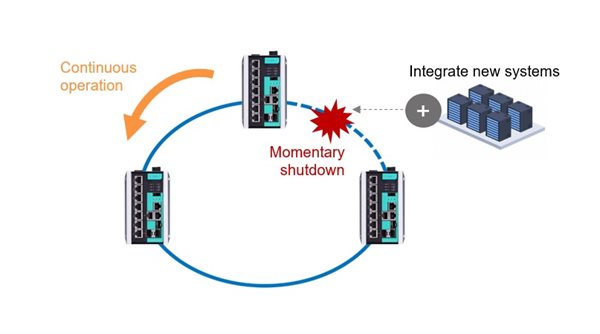From binge-watching the latest trending series to connecting with friends on social platforms or working on spreadsheets remotely, almost every facet of our digital existence revolves around retrieving data stored and processed in data centers located across the globe. Serving as the backbone of the digital era, data center infrastructure (DCI) continually expands and undergoes upgrades to enhance efficiency and cut down expenses. Any disruptions to data center operations can be not only costly for operators but also for the digital ecosystem as a whole.
The Financial Impact of Sustaining Our Digital World
All data centers manage their power usage effectively (PUE) and maintain optimal server cooling. Consequently, a significant portion of the construction and operational costs of any data center is allocated to power and cooling systems. Thus, selecting the most suitable power and cooling solutions becomes a paramount concern when establishing a new data center or expanding an existing one.
For a large-scale colocation data center, setting up a new facility typically involves costs running into hundreds of millions of US dollars, with a major portion expended on power and cooling systems. Every dollar saved by enhancing the efficiency and dependability of power and cooling systems translates into sizeable cost reductions for the entire project. To remain prepared for unpredictable and fluctuating customer demands, data center operators often install power, cooling, and monitoring equipment before adding server modules and network devices.
The yearly operational expenditure of a large-scale data center commonly reaches tens of millions of US dollars, of which nearly half is attributed to power and cooling expenses. By focusing on optimizing power consumption, DCI spending can significantly decrease costs and carbon footprints in the long run. Particularly in North America and Europe, the emphasis on sustainable growth and the modernization of outdated equipment are potent drivers of DCI expansion.
Challenges Influencing the Growth of DCI
Large-scale data center infrastructure relies on interconnected systems encompassing various devices like switchgears, power meters, controllers, and environmental sensors. These operational technology (OT) systems, including critical power supply, cooling, and building automation, play a crucial role in maintaining stable and efficient operations. Decision-makers are frequently confronted with two connectivity challenges:
-
Reducing downtime: Integrating equipment into existing networks may necessitate installation, testing, reboots, or reconfigurations, all of which could disrupt parts or the entirety of the network, leading to downtime. Downtime is especially detrimental for data centers, particularly Tier IV data centers requiring 99.995% availability and less than 25 minutes of annual downtime. Selecting the right equipment and project plan often proves to be more intricate, labor-intensive, and time-consuming than initially anticipated.
-
Connecting systems with varying communication protocols: Diverse systems utilize distinct communication protocols. For instance, power meters may utilize the RS-422/485 interface and traditional serial protocols, while cooling or HVAC systems may employ different OT protocols like BACnet. Bridging these disparate systems to enable efficient monitoring and control through the Data Center Infrastructure Management (DCIM) system involves an extensive and arduous system integration process, encompassing system reconfigurations, testing, and troubleshooting.
Mitigating Disruptions in Ongoing Data Center Activities
To tackle the aforementioned key challenges and reduce adverse effects, data center operators should consider three essential factors—namely, flexibility, redundancy, and interoperability—while assessing any solutions for their DCI expansion endeavors.
-
Flexibility: Opting for a modular approach, such as the Micro Modular Data Center (MMDC), enhances operational flexibility and system robustness. Operators can efficiently incorporate modular switches to add expansion modules as required. The modular design provides maximum flexibility, allowing operators to expand capacity by integrating application-specific and crucial modules equipped with sensors and controls to supervise and regulate cooling, uninterruptible power supply, and overall energy consumption.
-
Redundancy: Integrating suitable redundancy into the DCI aids in minimizing system downtime, particularly during expansions or optimizations. For instance, a redundant network enables the bypass of the regular network path temporarily during system integration. This ensures the entire system remains operational and accessible through the backup network.

-
Interoperability: Legacy devices may not be compatible with new equipment or setups during expansions or upgrades. As replacing legacy devices may not be feasible, a workaround involving industrial protocol converters facilitating the monitoring and control of all critical equipment, including legacy devices by the DCIM system, becomes imperative. For example, utilizing a BACnet-to-Modbus converter as a linkage between two communication protocols allows DCIM systems to communicate with both electrical power management systems and cooling systems.
Expanding DCI is akin to refueling a commercial aircraft mid-flight. Just as the plane cannot halt, the data center must stay operational. Therefore, a minor error could lead to significant losses for operators and major disruptions to business operations. Since power supply and cooling account for the majority of DCI construction, expansion, and operational costs, a well-thought-out planning process and equipment procurement focusing on flexibility, redundancy, and consistency are crucial to prevent future obstacles.
- Not Only for Automobiles: Discovering CANbus Technology in Various Industrial Settings - October 29, 2024
- Boost Your Network Performance: An Exciting Manual to PoE Switches! - September 10, 2024
- Understanding Gigabit Switches: Industrial vs Regular Gigabit - September 4, 2024


